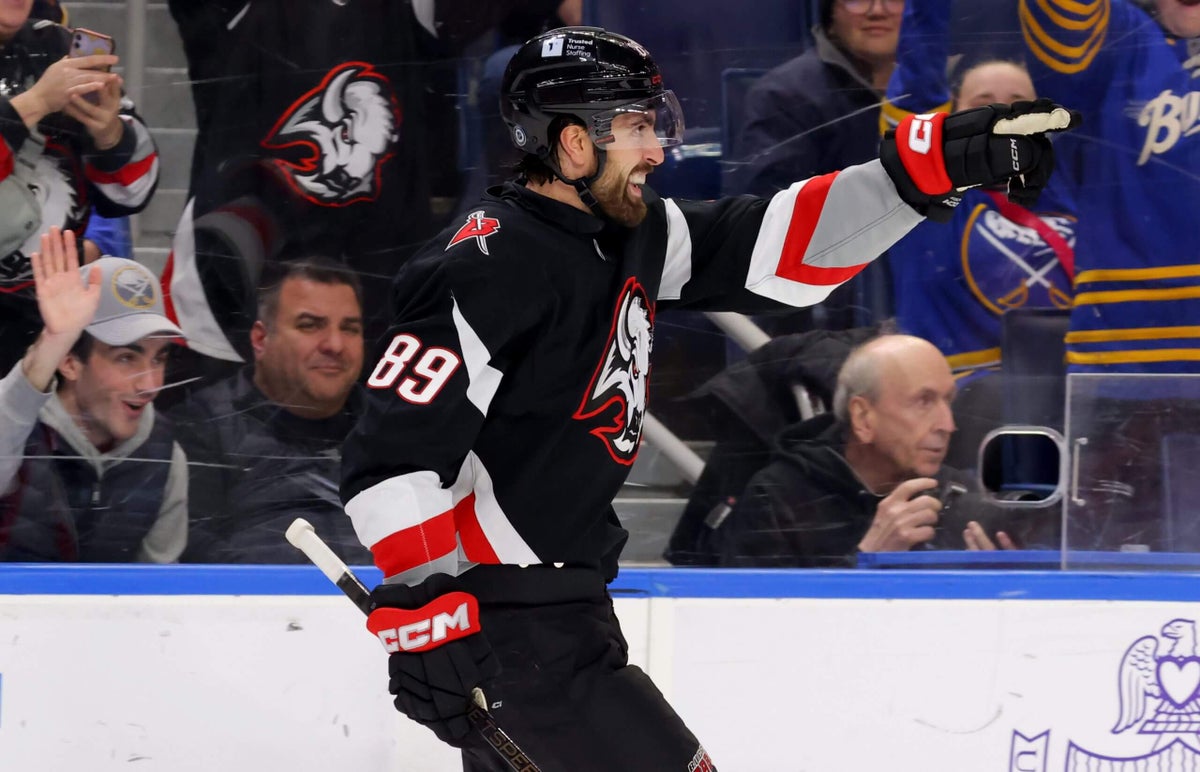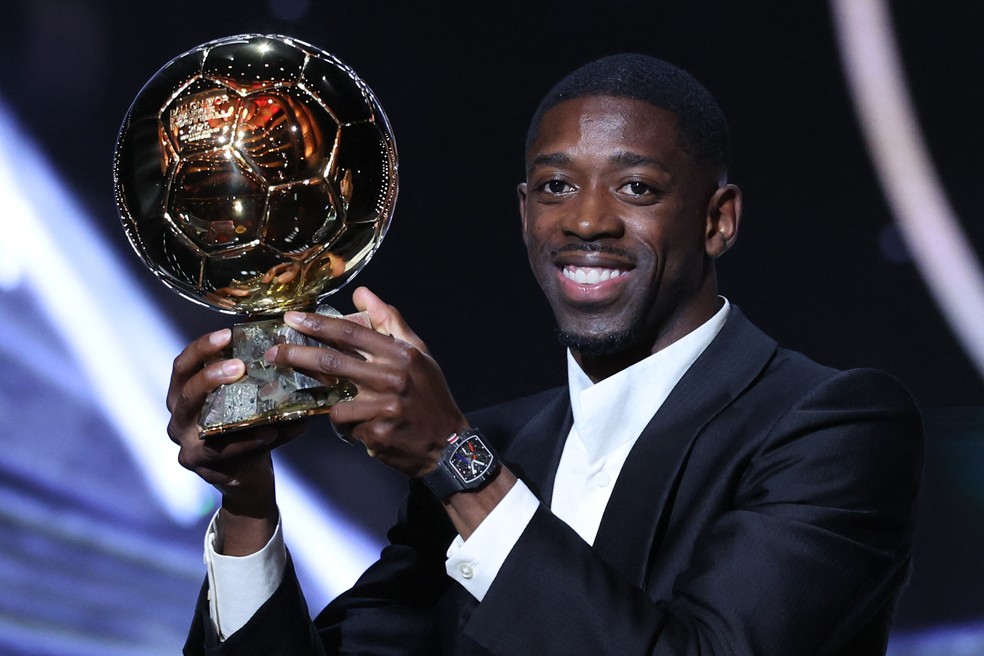

BUFFALO, N.Y. — Alex Tuch has a lot of leverage.
The Buffalo Sabres’ veteran forward is coming off one of the best seasons of his career. He played 82 games for the first time. He broke a record for shot blocks by a forward and led the NHL in short-handed goals and short-handed points. He did all of that while producing 36 goals and 31 assists. He was also plus-16, one of the few two-way bright spots on one of the worst defensive teams in the NHL.
Advertisement
“He’s typically a guy that leads our forwards in minutes, plays in every situation,” Sabres general manager Kevyn Adams said. “I thought he had a tremendous season and he loves Buffalo and wants to be here. So, he’s a priority. He’s a guy that we certainly hope to have for a long time.”
Since coming to Buffalo as part of the Jack Eichel trade in 2021, Tuch has become a fan favorite. He grew up a couple of hours away in Syracuse and was a longtime fan of the Sabres. His gregarious personality and giving nature have made him an asset to the community. For three straight seasons, fans have voted Tuch the winner of the Rick Martin Memorial Award, which is given to the player who best demonstrates “on-ice excellence, resiliency, and dedication to the community.”
Tuch took on the added responsibility of being an alternate captain. He’s one of the few players on Buffalo’s roster who has meaningful playoff experience. He’s one of the franchise’s most important players on and off the ice.
And since he’s been in Buffalo, Tuch has also been an incredible bargain with his $4.75 million salary. That bargain is going to run out soon, though. Tuch, who turns 29 in May, has one year left on his contract. He’s eligible to sign an extension on July 1. Asked about his contract situation the day after Buffalo’s season ended, Tuch kept things open-ended.
“I haven’t given it too much thought, honestly,” Tuch said when asked about his contract situation and possibly signing long term with the Sabres. “I was really focused on this year. I had some goals in mind, playing 82 games and I try to grow as a player each and every day. I haven’t given it too much thought. I think in the CBA, I don’t even think they can talk to my agent until July 1 or anything like that. When it comes to that, I’m hands off. I let my agent do all of that. I love it here in Buffalo. I really enjoy my time here and I would like to win here in Buffalo. I haven’t even really talked to my wife about it, honestly. That’s the first person I’m going to have to talk to. We’ll see if they say anything and we’ll go from there.”
Advertisement
Tuch’s contract feels like the biggest puzzle piece the Sabres need to figure out in their roster building going forward. Yes, they have some key restricted free agents to handle this summer. But Tuch’s cap hit in 2026-27 and beyond will impact the type of contracts the Sabres are able to give those restricted free agents. Tuch should be the team’s highest-paid forward on his next contract and has a chance to be the team’s second-highest-paid player behind defenseman Rasmus Dahlin.
Clearly, Tuch has the leverage. But his contract situation isn’t necessarily simple, either. There are a few factors to consider.
1. How long should the contract be?
Tuch is about to turn 29, so he will be 30 during the first year of his next contract. A seven-year contract would take him through his age-36 season. The Sabres are the only team that can offer Tuch an eight-year contract, but that would take him through his age-37 season. A contract of that length carries some risk for the Sabres. They have to consider how gracefully Tuch will age. Tuch’s game is such that he should be able to stay effective into his mid-30s. The big key will be how well he takes care of his body. He said he did some different things this year in terms of nutrition and training to try to stay on the ice for all 82 games. If he continues to do so, maybe he can prolong his career. The way he plays at the net front, his smarts and stick on the forecheck and his shooting ability should all age well. His speed will take a hit at some point, and Tuch has also dealt with a lot of nagging injuries in his career. That makes an eight-year deal a bit aggressive, but stretching the contract to eight years might make the cap hit more manageable.
The length of the deal will be something Tuch considers, too. He has to think about whether he’s willing to sign what’s likely the rest of his career away to play in Buffalo. Is he convinced that the Sabres are close to not only ending their 14-year playoff drought but on the path to competing for the Stanley Cup?
If Tuch isn’t convinced, his best path out is in free agency next season. That’s when the cap will go even higher and he could cash in on the open market. Otherwise, a long-term deal makes the most sense for Tuch to maximize his total earnings. A deal in the four- or five-year range only makes sense if Tuch is confident he can maintain his level of play enough to cash in again at 34 or 35. Will he still be an $8 million player at that age?
Advertisement
2. How high could Tuch’s price tag go?
According to Dom Luszczyszyn’s player cards, Tuch’s “market value” is $7.6 million based on his production. The cap hit on his next contract will likely be bigger than that. It feels like $8 million is the floor for Tuch after St. Louis signed Pavel Buchnevich to a six-year deal worth $8 million per year last summer. Like Tuch, Buchnevich is starting that contract in his age-30 season. Like Tuch, Buchnevich is a sturdy, two-way winger. Tuch has more scoring upside, while Buchnevich brings a bit more nastiness. But the two are comparable players and that should be where the conversation begins with Tuch.
But Tuch also has the leverage to ask for more. Last summer, Jake Guentzel signed a seven-year contract worth $9 million per year with the Tampa Bay Lightning. Guentzel was 29 at the time of signing but played the first year of that deal at age 30. While Guentzel is a more prolific goal scorer than Tuch, I’m not sure we can confidently say that $9 million is the upper limit for Tuch. For starters, Guentzel signed to play for a Stanley Cup contender in a no-income tax state with ideal weather. Tuch would be signing up to play for a perennial losing franchise in a state with high taxes and a noticeable lack of palm trees. Guentzel had the leverage of being a free agent on the open market. Tuch will have the leverage of being a player the Sabres can’t afford to lose. Guentzel’s deal was also about 10 percent of the $88 million salary-cap ceiling at the time. Tuch’s contract will start in the year when the salary-cap ceiling is expected to be $104 million. Even if he’s not worth 10 percent of the cap, a $9.4 million salary would be the equivalent of the Buchnevich contract, which was 9 percent of the $88 million cap when he signed it.
A cap hit north of $9 million would put Tuch among the 40 highest-paid players in the NHL. He would also be one of the 12 highest-paid wingers in the NHL based on cap hit. Those numbers will be changing with the cap going up, but there’s a limit to how high Tuch can push his number.
The other two comparable players to Tuch are both centers. J.T. Miller signed a seven-year contract worth $8 million per year that began during his age-30 season. And Jets center Mark Scheifele signed a seven-year contract that pays him $8.5 million per year. That started in his age-31 season. The tricky part of Tuch’s negotiation is how much the salary cap is going up. But I’d be thinking about his contract in terms of total value, and $60 million seems like a fair ballpark. That’s just over $8.5 million on a seven-year deal. The cap hit probably goes up a bit if it’s a shorter deal. And Tuch should be able to get plenty of trade protection in this deal.
3. What should the timeline look like?
Sabres fans shouldn’t necessarily panic if Tuch doesn’t put pen to paper on a new contract on July 1. He could want to see how the offseason plays out before committing the rest of his career to Buffalo. But if Tuch starts the season without a contract, that could be a nerve-racking situation for Sabres fans. Both sides would be taking a risk by waiting. Every day Tuch gets closer to free agency, the Sabres risk losing him for nothing. But Tuch’s value is also sky high right now, and passing on a life-changing contract is always a risk for a player when an injury could change things. Of the long-term extensions Adams has signed during his tenure, the majority have come late in the summer, before the start of the season. Dylan Cozens’ midseason extension was the exception.
4. What does it mean for the rest of the salary-cap picture?
According to PuckPedia, the Sabres currently have $43 million in salary cap space for 2026-27 with 10 players under contract. They have an estimated $67 million in cap space in 2027-28 with six players under contract. With the rising cap, the Sabres wouldn’t have much trouble fitting Tuch into their long-term salary cap. Even if JJ Peterka has a cap hit north of $7 million and Bowen Byram comes in north of $6 million, the Sabres are still in decent shape in 2026-27. Zach Benson, Isak Rosek and Peyton Krebs are the only RFAs they need to worry about that season. Beck Malenstyn, Sam Lafferty, Connor Clifton and Jacob Bryson are the other unrestricted free agents after that season. And the following year, when the cap is expected to rise to $113 million, Jiri Kulich and Noah Ostlund are the restricted free agents of note.
5. Conclusion
This will be a fascinating contract situation to watch play out. Few would argue that the Sabres should want Tuch in Buffalo as long as possible. But a variety of factors make the final landing spot a tricky one to project. We’re still in the early stages of figuring out how teams, players and agents will handle the rising salary cap.
Advertisement
We saw Dahlin push his value all the way to $11 million per year, and Owen Power got $8.3 million per year. The Sabres won’t be negotiating from a position of strength with Tuch the season he had and their situation as a team. My early guess is that if Tuch is willing to sign, he’ll get at least $8.5 million on a seven-year deal.
(Photo: Timothy T. Ludwig / Imagn Images)
This news was originally published on this post .











Be the first to leave a comment